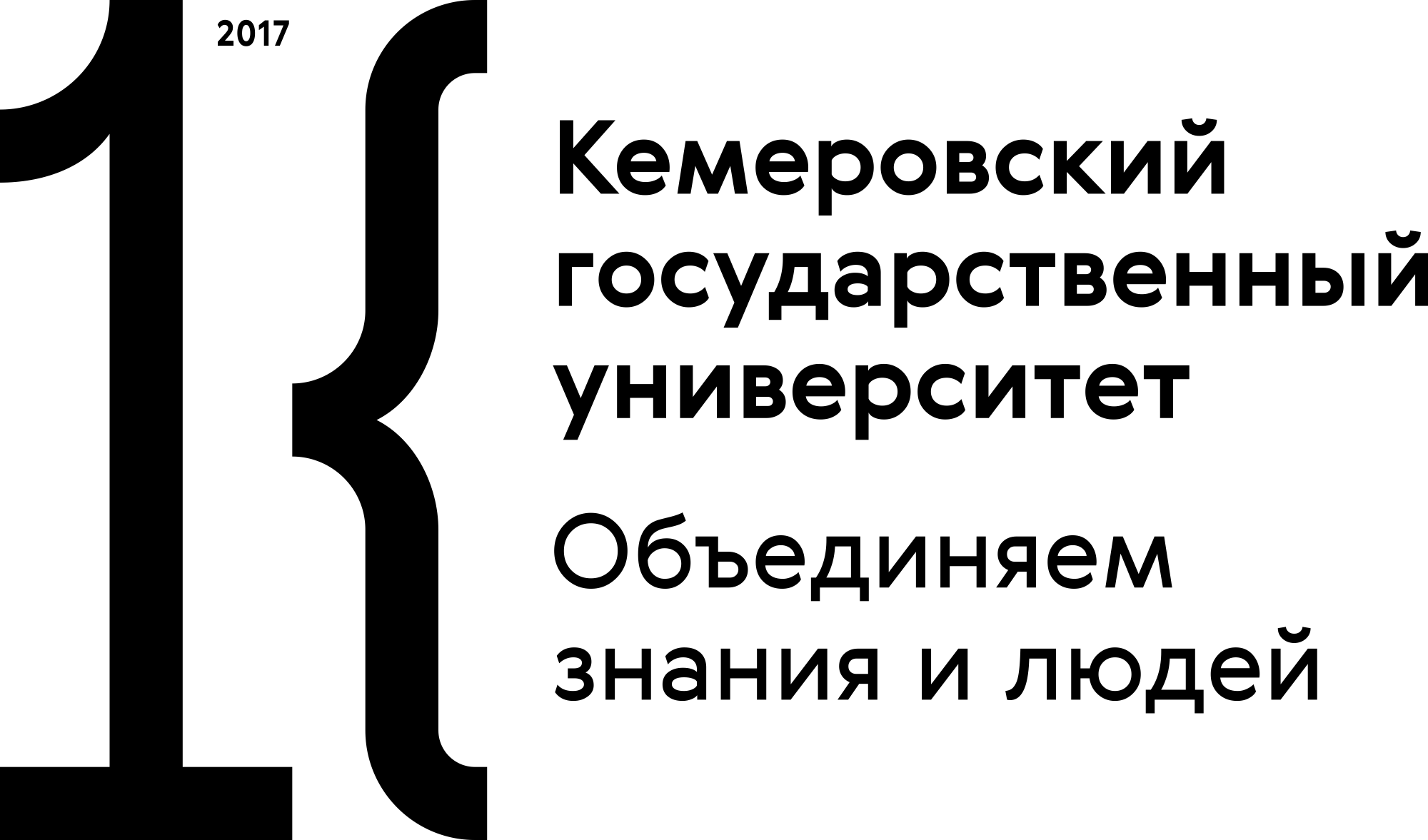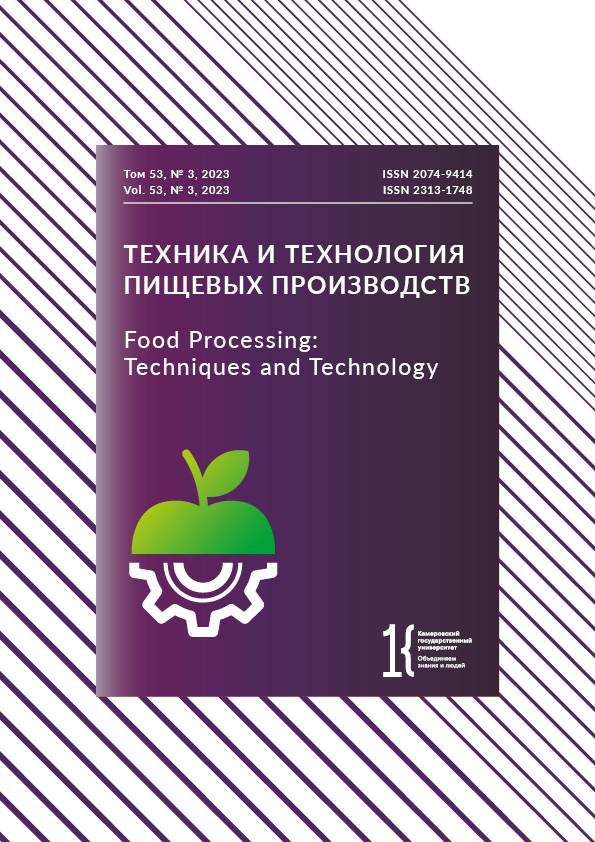Krasnodar Research Institute of Storage and Processing of Agricultural Products - branch of the North Caucasian Federal Scientific Center for Horticulture, Viticulture, Winemaking (Senior Researcher)
Krasnodar Research Institute of Storage and Processing of Agricultural Products - branch of the North Caucasian Federal Scientific Center for Horticulture, Viticulture, Winemaking (Department of food technology, quality control and standardization, Senior Researcher)
Krasnodar Research Institute of Storage and Processing of Agricultural Products - branch of the North Caucasian Federal Scientific Center for Horticulture, Viticulture, Winemaking (Department of food technology, quality control and standardization, Senior Researcher)
Krasnodar, Krasnodar, Russian Federation
Krasnodar Research Institute of Storage and Processing of Agricultural Products - branch of the North Caucasian Federal Scientific Center for Horticulture, Viticulture, Winemaking (Department of food technology, quality control and standardization, Chief Researcher)
Krasnodar, Krasnodar, Russian Federation
Krasnodar, Krasnodar, Russian Federation
Krasnodar Research Institute of Storage and Processing of Agricultural Products - branch of the North Caucasian Federal Scientific Center for Horticulture, Viticulture, Winemaking (Junior Researcher)
Krasnodar Research Institute of Storage and Processing of Agricultural Products - branch of the North Caucasian Federal Scientific Center for Horticulture, Viticulture, Winemaking (Department of food technology, quality control and standardization, Junior Researcher)
Krasnodar, Krasnodar, Russian Federation
De-oiling fluid lecithin is a resource- and energy-intensive process that provides a phospholipid isolate with a high content of phospholipids. Ultrasonic exposure is one of the most effective and easy-to-implement physical methods that intensify this chemical-technological procedure. This article describes the effect of ultrasonic exposure on the efficiency of de-oiling fluid lecithins. The research featured soy lecithin (fluid, partially de-oiled, phospholipid isolate). The de-oiling process involved acetone as a solvent and included three 10-min stages at a temperature of 40°C. The ratio of lecithin:acetone (by weight) was as follows: stage I – 1:7, stage II – 1:6, stage III – 1:5. The systems of fluid lecithin – acetone and partially de-oiled lecithin – acetone underwent ultrasonic treatment during the de-oiling process at different specific power and exposure time. As a result of filtration, phases separated into an acetone solution of neutral lipids and phospholipids. The phospholipid isolate was dried in a vacuum oven at 5 kPa and 40°C. Each stage ended with the following measurements: the content of phospholipids in partially de-oiled lecithins, the content of phospholipids in the phospholipid isolate, and the extraction degree of neutral lipids after distilling the solvent from the acetone miscella. The specific power in the lecithin – acetone system was 0.28 W/cm3 at de-oiling stage I and 0.36 W/cm3 at stages II and III. Three minutes of ultrasonic exposure at stages I and II and two minutes at stage III reduced the acetone consumption by 1.2 times. The resulting phospholipid isolate yielded by 3.3% more phospholipids than the control sample, which presupposed no ultrasonic treatment. Ultrasonic exposure proved to be an effective and solvent-saving three-stage method that intensified the process of de-oiling fluid soy lecithin. The study specified the optimal technological modes for obtaining a phospholipid isolate with a high content of phospholipids (98.6%), which can be recommended as a food additive.
Fluid soy lecithin, phospholipids, de-oiling, ultrasound, inten sification, phospholipid isolate
1. Alhajj MJ, Montero N, Yarce CJ, Salamanca CH. Lecithins from vegetable, land, and marine animal sources and their potential applications for cosmetic, food, and pharmaceutical sectors. Cosmetics. 2020;7(4). https://doi.org/10.3390/cosmetics7040087
2. Gutiérrez-Méndez N, Chavez-Garay DR, Leal-Ramos MY. Lecithins: A comprehensive review of their properties and their use in formulating microemulsions. Journal of Food Biochemistry. 2022;46(7). https://doi.org/10.1111/jfbc.14157 EDN: https://elibrary.ru/VFWJYH
3. Arepally D, Reddy RS, Goswami TK, Datta AK. Biscuit baking: A review. LWT. 2020;131. https://doi.org/10.1016/j.lwt.2020.109726
4. Wang M, Yan W, Zhou Y, Fan L, Liu Y, Li J. Progress in the application of lecithins in water-in-oil emulsions. Trends in Food Science and Technology. 2021;118:388-398. https://doi.org/10.1016/j.tifs.2021.10.019
5. Robert C, Couëdelo L, Vaysse C, Michalski MC. Vegetable lecithins: A review of their compositional diversity, impact on lipid metabolism and potential in cardiometabolic disease prevention. Biochimie. 2020;169:121-132. https://doi.org/10.1016/j.biochi.2019.11.017 EDN: https://elibrary.ru/VPCFSL
6. Küllenberg D, Taylor LA, Schneider M, Massing U. Health effects of dietary phospholipids. Lipids in Health and Disease. 2012;11. https://doi.org/10.1186/1476-511X-11-3 EDN: https://elibrary.ru/PHJTVX
7. Robert C, Vaysse C, Michalski M-C. Vegetable lecithins: Their metabolic impacts as food-grade ingredients. Cahiers de Nutrition et de Diététique. 2021;56(6):360-367. https://doi.org/10.1016/j.cnd.2021.06.002
8. Bot F, Cossuta D, O'Mahony JA. Inter-relationships between composition, physicochemical properties and functionality of lecithin ingredients. Trends in Food Science and Technology. 2021;111:261-270. https://doi.org/10.1016/j.tifs.2021.02.028
9. Lehri D, Kumari N, Singh RP, Sharma V. Composition, production, physicochemical properties and applications of lecithin obtained from rice (Oryza sativa L.) - A review. Plant Science Today. 2019;6(sp1):613-622. https://doi.org/10.14719/pst.2019.6.sp1.682
10. Lisovaya E, Viktorova E, Zhane M, Vorobyova O, Velikanova E. Research of the chemical composition peculiarities of food additives - vegetable lecithins for the development of methods for assessing their quality. BIO Web of Conferences. 2021;34. https://doi.org/10.1051/bioconf/20213406009
11. Lisovaya EV, Viktorova EP, Lisovoy VV. Analysis of the range of lecithins represented on the Russian market. Technologies of the Food and Processing Industry of the Agro-Industrial Complex-Healthy Food Products. 2019;28(2):51-55. (In Russ.). https://www.elibrary.ru/OHKTFS
12. van Nieuwenhuyzen W, Tomás MC. Update on vegetable lecithin and phospholipid technologies. European Journal of Lipid Science and Technology. 2008;110(5):472-486. https://doi.org/10.1002/ejlt.200800041
13. Cabezas DM, Madoery R, Diehl BWK, Tomás MC. Emulsifying properties of different modified sunflower lecithins. Journal of the American Oil Chemists' Society. 2012;89(2):355-361. https://doi.org/10.1007/s11746-011-1915-8
14. Miyasaki EK, Luccas V, Kieckbusch TG. Modified soybean lecithins as inducers of the acceleration of cocoa butter crystallization. European Journal of Lipid Science and Technology. 2016;118(10):1539-1549. https://doi.org/10.1002/ejlt.201500093
15. Bueschelberger HG, Tirok S, Stoffels I, Schoeppe A. Lecithins. In: Norn V, editor. Emulsifiers in food technology. John Wiley and Sons, Ltd; 2014. pp. 21-60. https://doi.org/10.1002/9781118921265.ch2
16. Joshi A, Paratkar SG, Thorat BN. Modification of lecithin by physical, chemical and enzymatic methods. European Journal of Lipid Science and Technology. 2006;108(4):363-373. https://doi.org/10.1002/ejlt.200600016
17. Sipki RR, Naumenko YuYu, Kitainov BV. Method of preparing phospholipid food product. Russia patent RU 2184459C1. 2002.
18. Shulʹga SM, Glukh AI, Glukh IS. Method for isolating phospholipids from a phosphatide concentrate. Ukraine patent 54922. 2010.
19. Glotova IA, Vysockaya EA, Makarkina EN, Galochkina NA, Konstantinov VE, Shahov SV. Complex processing of phospholipide fractions of unrefined vegetable oils: Analysis of innovative technical approaches. Food Industry. 2019;(1):32-36. (In Russ.). https://www.elibrary.ru/YXHEVN
20. Roselló-Soto E, Galanakis CM, Brnčić M, Orlien V, Trujillo FJ, Mawson R, et al. Clean recovery of antioxidant compounds from plant foods, by-products and algae assisted by ultrasounds processing. Modeling approaches to optimize processing conditions. Trends in Food Science and Technology. 2015;42(2):134-149. https://doi.org/10.1016/j.tifs.2015.01.002 EDN: https://elibrary.ru/XORDVV
21. Bredihin SA, Andreev VN, Martekha AN, Schenzle MG, Korotkiy IA. Erosion potential of ultrasonic food processing. Foods and Raw Materials. 2021;9(2):335-344. https://doi.org/10.21603/2308-4057-2021-2-335-344 EDN: https://elibrary.ru/CIBDPK
22. Paymulina AV, Potoroko IYu, Naumenko NV, Motovilov OK. Sonochemical microstructuring of sodium alginate to increase its effectiveness in bakery. Food Processing: Techniques and Technology. 2023;53(1):13-24. (In Russ.). https://doi.org/10.21603/2074-9414-2023-1-2411 EDN: https://elibrary.ru/BXVIHP











